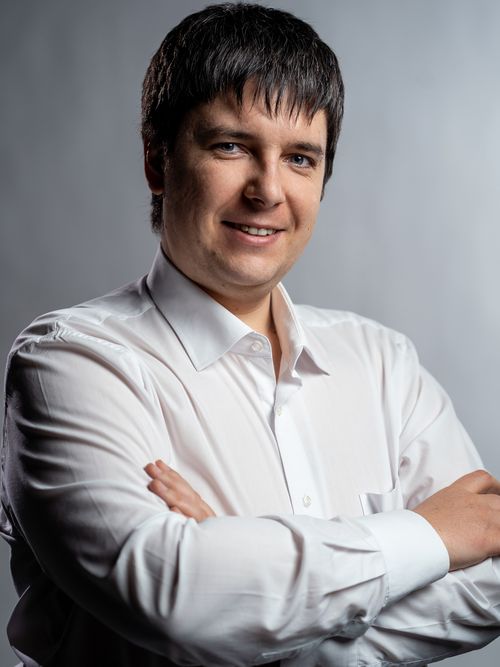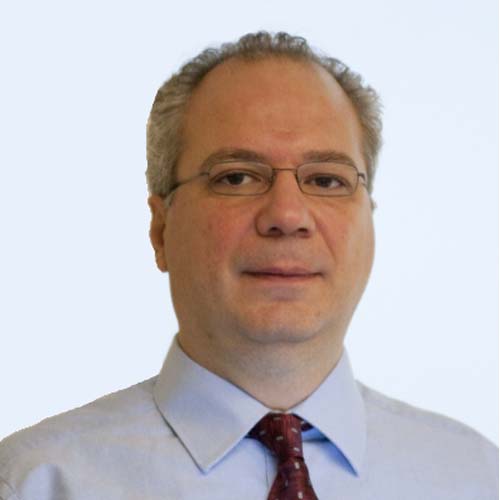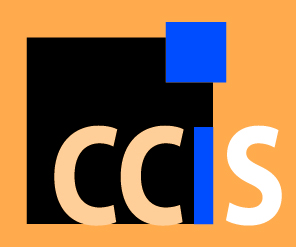Plenary Lectures
Milan Tuba
Singidunum University
Belgrade, Serbia
E-mail: tuba@ieee.org

Swarm Intelligence Applied to Medical Image Analysis
Digital images introduced big changes in the world. It is significantly easier to make and process digital images than analog ones. Besides using digital images in everyday life, they are an irreplaceable part of numerous scientific areas such as medicine. Images have been used in medicine for over a century but transition from analog to digital images has brought a true revolution in the diagnostic process. Before digital images, medical image analysis depended on physicians’ knowledge, experience but also on current psychophysical state of the experts, their visual acuity, concentration, etc. Digital images drastically simplified the process of medical image analysis since various digital image processing algorithms can significantly speed up and automatize analysis and diagnostics and moreover, computer-aided systems enable objective detection of small changes in digital images of body parts and tissues, even the ones that are not visible to the naked human eye. Applications of medical image processing include tasks such as image enhancement, segmentation, registration, anomaly detection, etc. These applications commonly contain hard optimization problems that need to be solved. Swarm intelligence algorithms, a class of nature-inspired algorithms, have been proved to be very efficient for tackling this class of problems. In the past decades, many different swarm intelligence algorithms have been proposed and applied to various real-world problems, especially to applications of computer-aided diagnostic systems and medical digital image analysis. Examples of successful applications of swarm intelligence algorithms to the medical image processing and analysis problems will be presented in this talk.
Brief Biography of the Speaker: Milan Tuba is the Vice-Rector for International Relations at Singidunum University, Belgrade and Head of the Department for Mathematical Sciences at State University of Novi Pazar. He received B. S. in Mathematics, M. S. in Mathematics, M. S. in Computer Science, M. Ph. in Computer Science, Ph. D. in Computer Science from University of Belgrade and New York University. From 1983 to 1994 he was in the U.S.A. first as a graduate student and teaching and research assistant at Vanderbilt University in Nashville and Courant Institute of Mathematical Sciences, New York University and later as Assistant Professor of Electrical Engineering at Cooper Union School of Engineering, New York. During that time he was the founder and director of Microprocessor Lab and VLSI Lab, leader of scientific projects and theses supervisor. From 1994 he was Assistant Professor of Computer Science and Director of Computer Center at University of Belgrade, from 2001 Associate Professor, Faculty of Mathematics, University of Belgrade, from 2004 also a Professor of Computer Science and Dean of the College of Computer Science, Megatrend University Belgrade and from 2014 Dean of the Graduate School of Computer Science at John Naisbitt University. He was teaching more than 20 graduate and undergraduate courses, from VLSI Design and Computer Architecture to Computer Networks, Operating Systems, Image Processing, Calculus and Queuing Theory. His research interest includes heuristic optimizations applied to computer networks, image processing and combinatorial problems. Prof. Tuba is the author or coauthor of more than 150 scientific papers and coeditor or member of the editorial board or scientific committee of number of scientific journals and conferences. Member of the ACM, IEEE, AMS, SIAM, IFNA.
Lyubomyr Demkiv
Lviv Polytechnic National University, Robotics Lead at SoftServe Inc.
Lviv, Ukraine
E-mail: demkivl@gmail.com

Intelligent real-time control of ground robots
The motion strategy for a ground robot significantly depends on the type of the terrain. Response time for tire-terrain interaction is crucial factor for the mobility of the robot. However, agile control of the robot requires not only the fast-responding controller, but also a state observer that is capable to provide necessary information about sensor data to the controller. Application of hybrid control strategies are beneficial for the mobility of the robot and will be discussed during the presentation.
Brief Biography of the Speaker: Lyubomyr Demkiv received his PhD in 2006 in Numerical mathematics and ScD in 2019 in Control Engineering. Since 2006 he is Associate Professor in Lviv Polytechnic National University. Since 2018 he is with SoftServe Inc. where he presently is Robotics Lead. His research field is intelligent control of dynamical systems.
George Eleftherakis
The University of Sheffield International Faculty, CITY College
Thessaloniki, Greece
E-mail: eleftherakis@city.academic.gr

Using primitive brains to achieve emergent smart solutions
Either for or against the validity of Kurzweil's law, it is a fact that technology accelerates at an astonishing pace achieving breathtaking results in any kind of human activity. The Internet of Things, the Cloud, Fog and Edge computing, the daily increasing visions for smarter systems following the advancements in machine learning, and many more technological innovations lead to more demanding requirements than in previous decades for emergent applications of extreme complexity. A promising solution to deal with such complexity is to employ systems that exhibit self* properties, composed by simple agents that communicate and interact following simple protocols achieving desirable emergent properties that allow smart solutions in dynamic environments of extreme complexity.
Nature through millions of years of evolution has many systems like that to exhibit. Studying systems of agents with primitive brains that demonstrate remarkable self* properties that emerge and are not explicitly engineered could prove of great value regardless of the required effort. Imitating similar behaviors in artificial systems could offer smart solutions to problems exhibiting high-level complexity that seemed unsolvable, or are solved under very restricting and concrete conditions.
This presentation will present and discuss experiences studying ants, large-bodied animals, bees, hornets, focusing on the latest study of frogs and how their mating strategies could potentially lead to smart solutions in acoustic scene analysis field, disaster management, and many other complex dynamic systems.
Brief Biography of the Speaker: George Eleftherakis is an Associate Professor and the Director of the PhD program at the University of Sheffield International Faculty, CITY College, in Thessaloniki, Greece. He has authored more than 95 publications on the interface of computer science, biology and engineering. His honors include receiving the Senate Award for Sustained Excellence in Learning and Teaching from the University of Sheffield.
Eleftherakis is a Senior ACM member and has been a member of the administration board of the Greek Computer Society since 2002. Since 2013 he has been the Chair of ACM’s Committee of European Chapter Leaders and a member of the advisory Committee of ACM-W Europe Council, participating actively in all womENcourage conferences in Europe. He is also the Faculty Advisor for the City College ACM-W Student Chapter at the University of Sheffield International Faculty.
His research is in the wider area of software engineering, and, more specifically, nature-inspired computing. His PhD in Formal Methods and Bachelor in Physics made him realize that computing has reached an extreme level of continuously increasing complexity following an extreme rate of technological advancement, and led him to investigate natural systems exhibiting emergence (the study of how collective properties arise from the properties of parts). This work tried to establish a well-defined, disciplined, scientific way to perform research on natural systems. It established a framework to study diverse biological systems, such as the herding behaviour of large animals, as well as the characteristics of ants, bees, frogs and other systems found in nature. All of these systems exhibited emergence and achieved some remarkable properties, such as self-adaptation, self-organization, etc., that would be desirable in artificial systems. His research investigates ways of modelling artificial solutions mimicking those behaviours inherent in natural systems to achieve artificial systems that were self-adaptive and self-organizing. An architecture for IoT solutions in dynamic environments, based on the initial abstract bio-inspired overlay network proposal called EDBO, and its implementation as middleware, was a concrete outcome of this work. Currently, he is applying these findings to health monitoring, with a focus on chronic diseases, and on acoustic scene analysis.

